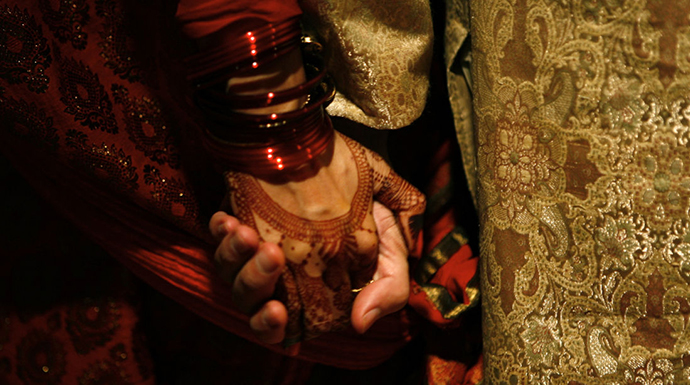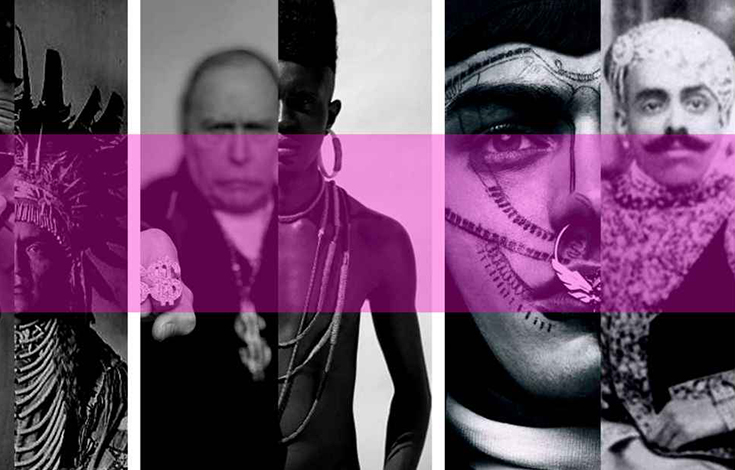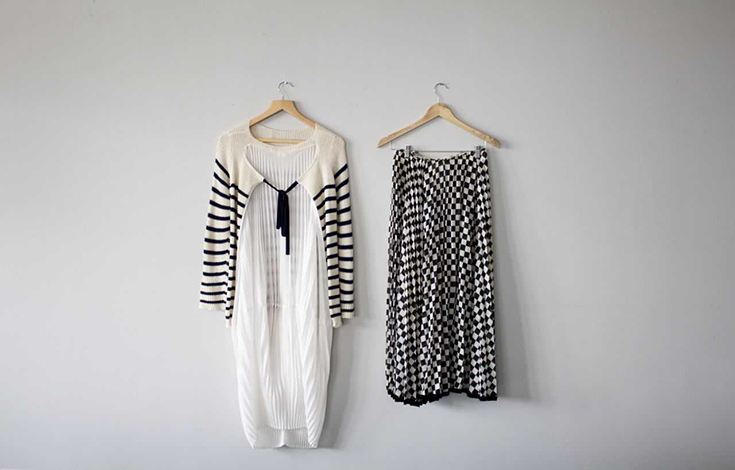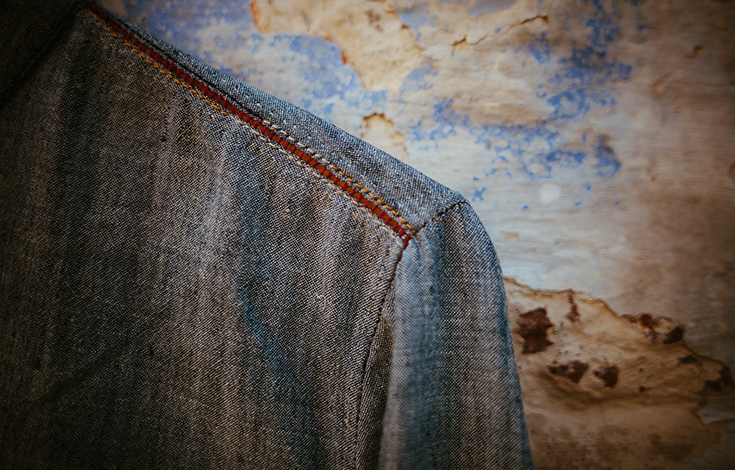Our wedding was weeks away. The invitations had long been sent and we were in the midst of allocating rooms. I still did not know what I would be wearing.
I was searching for something that appealed to my sensibilities towards a more minimal approach – something a growing number of Indian brides continue to voice. Whereas I knew I wanted to wear red, I could hardly imagine donning anything I had seen. I was yearning of something I could relate to… the equivalent of the white slip of a wedding dress. Our equivalent is not a plain silk sari – after all, the white slip dress is in charmeuse, bias cut and so exquisitely crafted that only a simple pair of earrings are necessary to complete the outfit.
At the same time, there were these intense cultural and traditional references that I wanted to pay heed to, if only partly. Without something anchoring this thought, connecting it to a reference that meant something which I could understand it would have just been ‘fusion’. Years later, I realized the mood in which I approached this moment – Solah Shringar – provided that balance without my even trying.
Rooted in the ritualistic adornment of a Hindu bride; solah, or sixteen, refers to the various phases of the moon and represents sixteen ‘adornments’. Shringar can be loosely transcribed as the moods of love and beauty. The process of shringara pays heed to the purification of the mind, body and spirit. The bride readies herself for her married life, with many of these adornments signifying her transition to becoming a wife. It is the composition of these that classify the ritual: a bridal dress (usually red), hair and body preparation (haldi/turmeric paste, oiled hair with flowered garlands), the bindi, sindoor (red vermillion), maang tikka (hair/forehead ornament), kajal (kohl), nath (nose ring), bali (earrings), haar (necklace), mehendi (henna), bangles, baajuband (armband) , rings, kamarband (belt), payals (anklets), Itar (fragrance).
While the arrangements of our wedding were consciously planned and discussed, my wedding wardrobe was being driven by another force – the desire to strike a balance of purity, beauty and yet stay true to my design sensibilities. Solah shringara was not conscious – it became instinctual. I say this as a liberal and agnostic individual.
Reflecting now, I am struck by how many of those elements I incorporated on a subconscious level. A minimalist at heart, I looked to Rajesh Pratap Singh for my wedding dress. That he had never dressed a bride swayed me none. As he would later say, “I should have known, the only bride I’ve dressed would wear pants”. His delicate lattice work — my favourite — was to be present throughout every seam, hardly visible yet technically elaborate. There was to be a head covering which revealed itself as a hooded cape, thickly hemmed in hand woven red silk. At a fitting, some cut-work flowers on another garment caught my eye and upon asking them to be incorporated to my wedding dress I was told no one would be able to see them. Unfazed and perhaps more enchanted by the idea of it, we went ahead. It was almost as if I was driven by a desire to be privately cloaked in finery. There was no embroidery. The pants were a draped dhoti style. The whole outfit weighed under 400grams. It was the most sublime canvas to adorn me and yet in so many ways, a blank canvas upon which to be adorned.
My haar, a panch-lara (five strand necklace) was to be of pearls with kundan. The earrings reflected the same design. But the meena work, usually blue or green was to be in black. Red. Black. Ivory. The color stopped there. The jeweler kindly offered that perhaps the jewelry was more suited for a wedding guest. This was paired with a gift from my in-laws, a South-Indian thali. It mirrored the reality of my worlds; the coming together of families and my Northern Indian roots which had spread to my newer home in South India.
For someone growing up with an insecurity about her nose, I embraced the thought of a nose ring without abandon, mostly in love with the strand of faceted rubies connecting to my hair.
The morning of the wedding I realized I had done little to secure my ‘look’ in terms of trials and planning. The maang tikka was an antique piece borrowed from a friend – because, when I was I going to wear one again? Fresh flowers were pinned to my hair, hidden below the hooded silk. In a last minute inspiration, flowers were then tied around my ankles. As per tradition, toe rings were to be given to me by mother’s brother.
It was important my hands did not distract my thoughts. They are what I look to when I am nervous, pensive and quiet. As such, my mendhi had been inspired buy a pair of scooped Lacrasia leather gloves I had bought when I was younger. With a design stopping a little past my knuckles, the design and memories of those gloves I wore for months during cold Montreal winters became something I smiled at. The ring I wore was my Nani’s, as she was not there in person and I painfully wished she was. The plain glass chooris were in two colors of red glass bought in Chandini Chowk, Delhi. I wore two gold bangles given to me by my new Bhua and a bracelet my mother had given me. The hands held a lot of significance without much thought.
I was smeared with haldi a few hours before the wedding. A source of stress in the shower as it made me look yellow and not the desired shade of ‘golden’. The bindi represented itself as a line in sindoor. Fragance? I was adorned in fresh flowers.
These were all instinctual and natural choices which when I reference now, surprise me in their alignment with an ancient ritual. Prior to marriage, I would not have been able to recount them. I’ve since come to believe that most Indian women privy to Hinduism have something in their DNA that leads them to some interpretation. Most Indian brides I have since seen aspire to some sense of it – the majority of them not even realizing. Almost as if it’s hard coded.
In my thank-you note to Pratap and his team I wrote the following, ‘I felt light – almost naked”. That to me, was shringara personified.





I love your writing style and your insightful perspective.
Lovely – my biggest regret is that I did not make it.
A while ago I did a story on where to-be brides should look in case they want to take a minimalistic approach to Indian bridal wear. Rajesh Pratap topped my list of designers-to-approach. His team told me he had only dressed one; a bride who picked trousers and a hooded veil, a take-off from his old Paris collection. It sounded so wonderful and I put it in my story, hoping others would get inspired.
To know the bride he dressed was you, is giving me the goosebumps in the best way possible.
@Nidhi, Thank you for sharing – would love to see the story someday
Wonderfully and introspectively described, Malika. You were a beautiful bride…loyal to the rich traditions without betraying your modern preferences. With best memories from your wedding…Kiveli
Yes, that is our Malika. Very elegant and refreshing. Well done “girl” – and love.
Beautifully written! I’m now dying to see a picture of you on your wedding day. I can only imagine how chic you must have looked.
Lovely read!